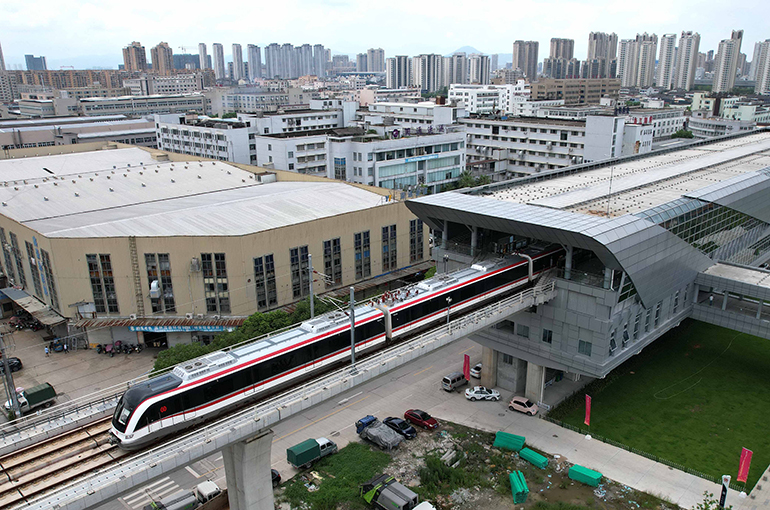 China’s Intracity Rail Network Tops 10,000 Km as Beijing, Tianjin, Other Cities Add More Track
China’s Intracity Rail Network Tops 10,000 Km as Beijing, Tianjin, Other Cities Add More Track(Yicai) Nov. 23 -- China’s inner city railway lines will exceed 10,000 kilometers this year as more than 10 metropolises, including Beijing and Tianjin, plan to open around 20 rail transit lines before the end of this year. And next year even more will be added.
Beijing extended its city railroad network by over 30 kilometers this year, bringing the total to more than 800 km, similar to Shanghai. The two megacities have the most intracity track in the country.
Chengdu opened 43 kilometers of urban railway, bringing the total to more than 600 km to rank with Guangzhou in the second echelon of intracity track. Next year Chengdu is likely to add seven inner city rail transit lines stretching over 100 km, bringing it to third place nationwide.
Shenzhen in southern Guangdong province, the municipality of Chongqing in the southwest, Hangzhou in eastern Zhejiang province and Wuhan in central Hubei province all have an inner city rail network of over 500 km and are in the third echelon.
Zhengzhou in central Henan province added 94 km of railway track this year, which will probably be the most in the country.
Intracity railways are very expensive to build and costly to operate. It costs between CNY200 million (USD28.2 million) and CNY300 million per km of overland track, and for subways between CNY700 million and CNY800 million per km, according to a report by the China Association of Metros.
And the operating cost was CNY1.49 (USD0.21) per passenger km on average last year, half of which goes towards labor, the report said. In megacities, the unit operating cost is CNY1.28 per passenger· km, while in small and medium-sized cities it is CNY2.30 per passenger km, it added.
This puts a lot of pressure on municipal governments, which are experiencing difficulties fundraising amid a sluggish economy. In July 2018, the country’s cabinet laid out requirements for inner city transport, which included expanding the rail transit network.
There were 10,287.45 km of railroad track along 308 rail transit lines spanning 55 cities as of the end of last year, according to the China Association of Metros.
Editor: Kim Taylor